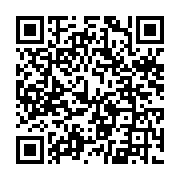By Sandy Carpenter, University of Connecticut School of Medicine.
“Sandy, I’m in the emergency department. They think I have sepsis and I’m being admitted.” My friend Gary’s voice, usually so jovial, sounded washed out and tremulous like an echo from the bottom of a well. This was not the cheerful voice message to which I was so accustomed. In a jolt of cold panic, I immediately dialed and re-dialed the hospital phone number, but could not get in contact with him that night.
Gary is one of my closest companions. Insatiably curious, he devours audiobooks and competes ferociously at trivia games. Although Gary has an uncanny ability to memorize information, I knew that he would not be able to use the hospital phone by himself. Gary was born with cerebral palsy and he is also blind. We met during my second year of medical school through a disability advocacy organization. Forming a fast friendship, we collaborated on multiple advocacy initiatives and kept in regular contact. From time to time, Gary asked me to help out with personal care when his aides canceled. Despite my initial apprehension and inexperience with caregiving, I learned quickly from Gary’s seasoned instruction as he described the best ways to feed, move, wash, and dress him. Personal care assistance was not something I had learned in medical school, but Gary showed me how to use a patient lift, change his catheter bag, and adjust his wheelchair. Through trial and error, often involving uproarious laughter, we shared moments of vulnerability tempered by trust and respect. Far from a one-sided act I had thought caregiving to be, partnering with Gary in his care was a dynamic conversation that allowed me to better understand his preferences, limitations, and values.
I visited Gary the following morning in the intensive care unit after he underwent emergency surgery. He rested uneasily, intubated and in soft restraints. The light touch of my hands awakened him from medicated slumber, and he excitedly recognized the sound of my voice. Grinning widely around the endotracheal tube lodged in his mouth, he attempted to speak but could only gag. “Gary, squeeze my hand once for yes and twice for no, OK?” I instructed him. We enjoyed this simple exchange of squeezes for a while, but Gary’s vigor began to wane. He conveyed to me that he wanted the tube taken out. I could offer no relief, as I did not know for how much longer he would need to have it. He gripped my hands with desperate strength, so I gently disentangled our fingers. Tears slipped off the edges of Gary’s face as he choked on the tube. On my hospital clerkships, I had seen and examined many patients lying still under stiff white sheets, attached to blinking beeping machines, with tubes secured in their throats. This was in stark contrast to the times I had positioned Gary in his bed and adjusted the blankets to his liking.
Gary recovered and returned home, but he was irreparably changed. Although he was well adapted to life with physical and visual disability, the abrupt and jarring loss of speech he had experienced in the hospital had profoundly affected him. Speech allowed Gary to self-advocate, ask questions, and tell his stories, all fundamental aspects of his autonomy and identity. He relayed to me, “I know the breathing tube saved my life, but I have never felt so isolated or so powerless. I could hear people moving and talking, sometimes about me, and I couldn’t say anything to them. I couldn’t move or do anything. I was a ghost in my own body.”
I carried his testimony with me as I began my fourth-year rotation in the surgical intensive care unit. There, I was part of a team caring for a young man who sustained a high spinal cord injury and could no longer breathe on his own. Each morning as I assessed him, he implored me with pained eyes to remove the endotracheal tube. When I explained that I could not, he shuddered with silent sobs, and I was reminded of Gary’s voiceless anguish. In the chart, personal care was ordered multiple times a day for the patient but, lying in bed trachea intubated and arms restrained, he had no way to direct his care. Did the patient feel as Gary did, like a ghost in his own body? I wondered if improved communication would at least partly restore the patient’s agency and thus his sense of identity. I created about 25 cards with simple phrases that he could use to express his needs. He was eager to use them. Although communication was slow, it was now much more equal between us. Later, with help from his family, the cards were translated to Spanish and the deck was substantially expanded. Despite the growing rapport between us, I had not realized that my patient’s primary language was not English, and I was humbled by this discovery. Like Gary, this patient had watched and listened to others as they moved and spoke around him, but with no way to make them stop and listen to him in return. Conversation through caregiving served to address this imbalance.
As a future physician fascinated by critical care, my background in disability advocacy reminds me that caregiving is the compassionate core of medicine. In serving my friend Gary and vulnerable patients, I have learned that the provision of lifesaving treatment can be profoundly limiting of autonomy and cause immense suffering even as it reverses disease processes. Caring for others with humility and open-mindedness is especially challenging when patients cannot move and cannot speak by design. Yet care must always strive to be a complete and equal dialogue that preserves mutual trust and agency as it sustains organ systems. Partnership with Gary in his care has taught me that in moments of great struggle and uncertainty the most valuable treatment is upholding a patient’s dignity.
